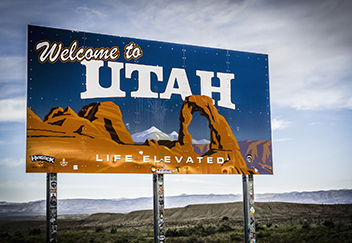The State of Utah’s Economy in 2024
1/24/24 | Kinsey Love, Digital Marketing Manager

What’s Shaping the Utah Economy in 2024?
It’s a new year, but Utah’s economy carries much of the same story going in to 2024. It’s one of—if not the best—economies in the entire country. It’s a narrative said repeatedly by many leading experts and state officials and for good reason; the awards have been piling up for Utah.
WalletHub named Utah the Best State to Start a Business for 2024. U.S. News called the Beehive State the top state in the country after high marks in many categories, including Best Economy. And according to another survey by WalletHub, Utah is the happiest state in the nation when considering emotional and physical well-being, work environment, and community environment.
Suffice it to say, Utah is red hot, economically speaking.
Of course, all this growth and still-untapped potential brings a unique set of challenges that may require major solutions in 2024 and beyond. The Kem C. Gardner Policy Institute at the University of Utah recently released its report, “The New Utah: Keepers of the Flame,” which reports data on how our population growth, job security, demographic change and housing affordability constructs the state’s economy. As personal and commercial bankers working face-to-face daily with Utah residents and businesses, our Altabank experts have our pulse on our community’s financial needs. Here’s our insight on the report and how the economy may affect you.
Population Growth: In-Migration, Low Birth Rate Yield Increase in Quantity and Age
Utah used to rely heavily on natural growth to build its population. However, over the last decade or so, the state’s birth rate has either declined or held steady. And over the last two years, Utah has gained more population from in-migration than natural increase. The reason for this could be the high quality of life for active, young adults which can be very appealing for those from other states.
All this means that as Utah grows, it’s picking up new residents at an older age that require certain things—such as their first single-family home—more immediately than a traditional native Utahn who was born in the state and growing at a natural pace.
Favorable Job Security: Utah Ranks 3rd in Cumulative Job Growth
If you need a good job, it’s not hard to find one in Utah, according to the economic reports. Described as an “elite” economic state in the U.S., Utah boasts an incredibly robust job market.
And if you’re the type to venture out and start your own business, Utah might be the best place in the entire county to do so. Not only did WalletHub call Utah the best state to start a business in, but another survey on the same site found that four of the five best cities in the country for new entrepreneurs are in Utah. From St. George to Logan, Utah is primed for new ideas and folks willing to take a chance on their own.
Of course, this appeal also affects the housing market challenge as well.
Lack of Affordable Housing: Utah Ranks 7th Highest Median Single-Family Home Prices
If you’ve tried breaking into the Utah housing market over the last couple of years, you already know how challenging it can be. Utah has moved from a small state to a medium-sized state and as a result, one of the biggest pain points is in the housing market. As it stands now, Utah has the 7th-highest median single-family home prices in the United States.
Previously, Utah tracked closely with average home prices around the nation but lately has been consistently above the national average.
One of the primary factors pacing this shift is the fact that demand exceeds supply considerably. According to the Gardner Institute’s report, unless Utah significantly increases its housing supply, high costs for single-family homes are expected to persist. It’s one of the state’s biggest key issues.
More Diversity: Nearly One in Four Utahns Are a Racial/Ethnic Minority
Not only is Utah growing on paper, but the racial and ethnic makeup of the state is dramatically changing as well. From a minority population of just 9.5% in 1990 to a much higher 23.3% in 2022, Utah looks much different than it did 30 years ago. Now, nearly one in four residents is a racial/ethnic minority.
This influx of diversity, which is related to the increase of in-migration, has the potential to reinvent Utah’s culture, perspective, and perception to the rest of the world. Experts predict this increase in diversity to continue for the foreseeable future. As Utah’s population changes, so too may state policies and social services, which in turn, could affect the state’s economy.
Regardless of what 2024 may bring to Utah, it’s always a good idea to be proactive, especially with your financial future. To get in touch with a trusted financial partner at Altabank, please reach out here or find your nearest Altabank location here.
